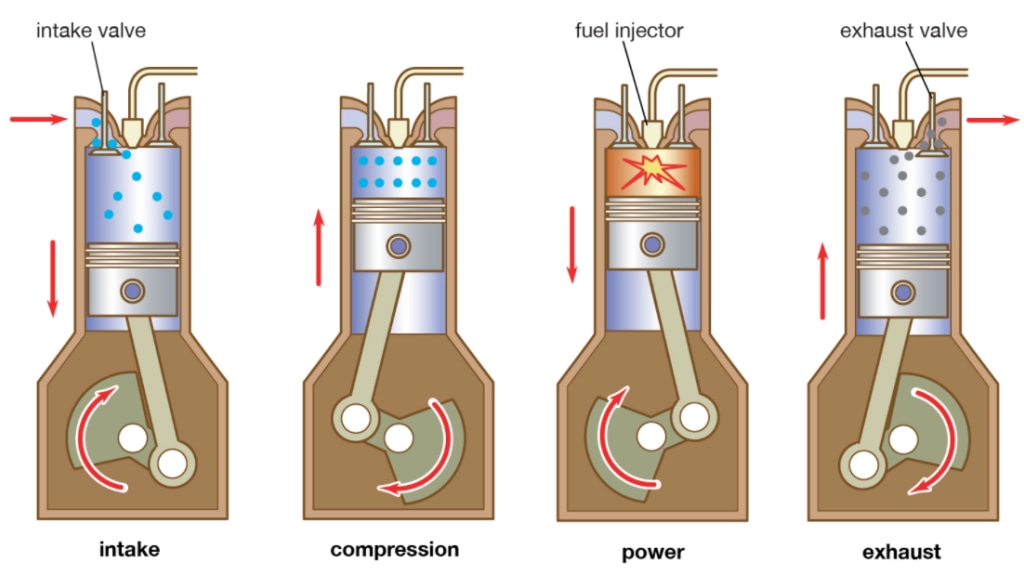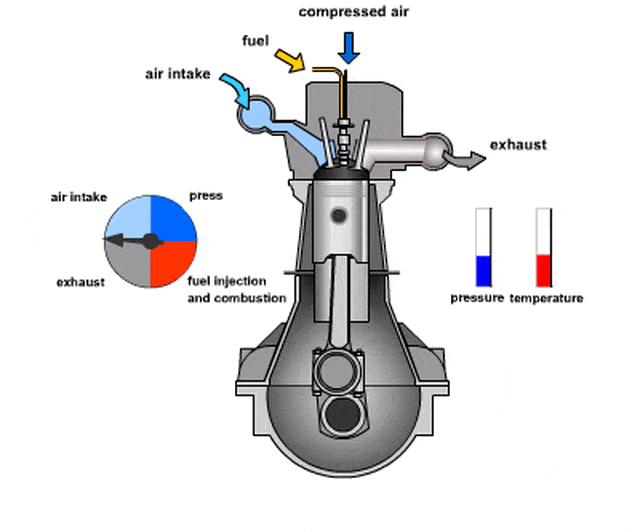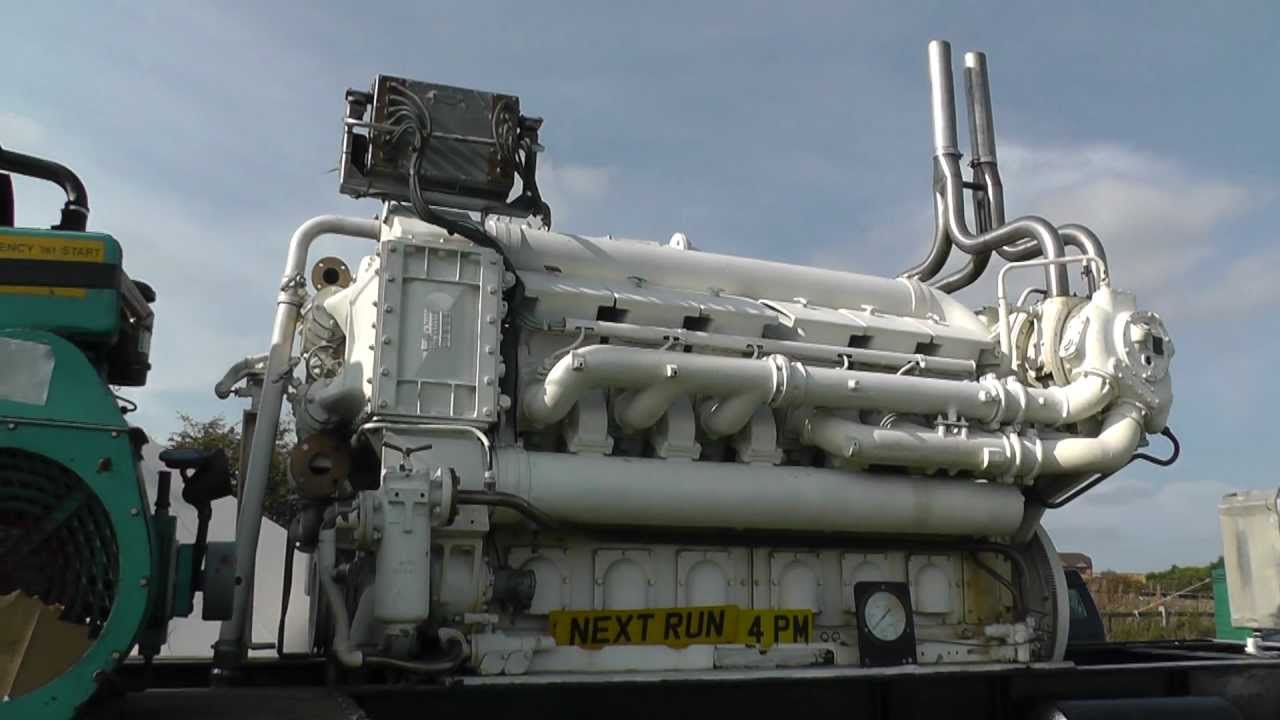The diesel engine was invented by a German scientist named Rudoft Diesel in 1893. The first prototype diesel engine was then made in 1897. Initially, the diesel engine was only used in large motorized vehicles such as trucks and full size SUVs
Characteristics Diesel Engine sounds rough and the vibration is more pronounced than gasoline engines. But more than that it offers abundant torque.
Then, how does a diesel engine work? Is it similar to a gasoline engine? Keep in mind, the way Diesel engines work does not require spark plugs. As a trigger for combustion, it requires diesel and compressed air .
How a 4-stroke Diesel engine works
The way a diesel engine works is different from that of a gasoline engine. How does the engine that is believed to be able to produce this greater torque works? Check out the explanation below!
Like modern gasoline engines, the combustion process goes through 4 steps: intake, compression, combustion, and exhaust. The components in the engine include pistons, intake and exhaust valves, injectors, intake and exhaust manifolds , connecting rods , and crankshafts.

Suction Phase
The first way a diesel engine works is the suction phase. The working system of the diesel engine in this phase is the entry of air into the combustion chamber through the valve. In this phase, the piston moves from TDC (Top Dead Center ) to BDC (Bottom Dead Center) to produce an increase in volume in the cylinder chamber. In addition, this phase also plays a role in sucking outside air into the cylinder space without using fuel.
Compression Phase
After passing through the suction phase, the next way the diesel engine works is the compression phase. After the air from outside has collected in the cylinder chamber in the suction phase, the BDC (Bottom Dead Center) and the cylinder chamber will store the air, then the piston will begin to compress the air until the pressure and temperature become high enough.
Work process
Compressed air usually reaches a temperature of 5,500 degrees Celsius, while the boiling point of diesel fuel is at a temperature of 3.00 degrees Celsius. After the air is compressed and reaches that temperature, the next way the diesel engine works is that the injector component will start spraying diesel fuel to drive the car engine.
Disposal Phase
After going through the work process, the next diesel engine working system enters the exhaust phase. The combustion products that have been formed from the gas will then flow into the cylinder chamber. In this phase, the position of BDC (Bottom Dead Center) to TDC (Top Dead Center) has a role to push the gas out through the exhaust valve to become the driving force.

Those were the four main phases on the working principle of a diesel engine that you need to know. After understanding these phases, you can make a car with a diesel engine a driving choice because of the various advantages it offers. One of them is fuel economy, because diesel engines do not use spark plug components which make the use of fuel more efficient and maintenance is not complicated.
You can also see this video about how diesel engine work.


